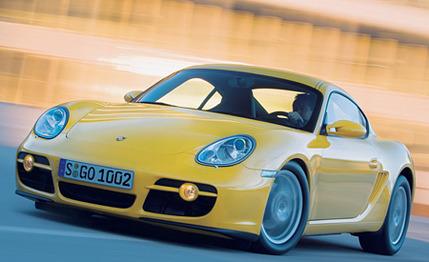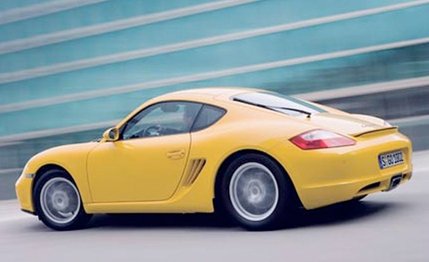
 Short Take Road Test
Short Take Road Test
It's appropriate that a company that has built rear-engined cars for over half a century should do things somewhat backward. Like bring out the convertible version of a new model (Boxster) first. Then bring out a coupe based on that convertible (Cayman) later, but introduce the high-performance S version first, thereby completely contradicting every precedent the company ever set. Finally, this same company—Porsche, in case you hadn't guessed—then charges more for the hardtop than for the convertible; pretty much the opposite of what every other company does.
But there's a simple rule underlying this apparent paradox. It's called customer demand. In the case of the base Porsche Cayman, a somewhat cheaper version will undoubtedly be welcomed by hordes of wannabe owners who are shocked by the Cayman S's steep base price of $59,695. Okay, the base car still runs fifty grand before you begin checking option boxes, but it's enough of a discount to start the tire-kickers punching calculator buttons again.
To drop the price, Porsche equips the Cayman with a 2.7-liter version of the company's iconic flat-six—the same engine that's in the base Boxster—that now has the company's variable intake valve timing and lift system. The result is a peak output of 245 horsepower at 6500 rpm and 201 pound-feet of torque available between 4600 and 6000 rpm.


The car's throttle response below 4000 rpm isn't exactly dog-slow, but it's clearly soft in comparison with the Cayman S's virile surge of power at low engine speeds. When you're pressing on in the base Cayman, you need to keep the revs up, and that lends an impression of a car with a limited usable rpm range. But it's mainly because the power lives at the top end. The engine pulls hard once it's on the cam, and twists the needle across the tachometer face between four and seven grand with respectable haste.
Speaking of haste, we put the spurs to the 3008-pound Cayman and 60 mph turned up in 5.5 seconds, with the quarter-mile passing in 14.1 at 100 mph, similar to the identically powered base Boxster.
Another aspect of the base car that stands out in stark contrast to the S-model is the five-speed transmission. Its action isn't as slick and accurate as the Cayman S's six-speed, and we occasionally beat the synchromesh in fourth gear on our (possibly abused) tester. The necessarily wider gaps in the gear ranges highlight the relative lack of bottom-end torque, but this situation is easily remedied with the optional six-speed gearbox. Of course, like all good remedies, it isn't a cheap solution, costing $2680 (but that also includes Porsche's PASM active suspension).
Otherwise, the base Cayman shares much of what makes the S-model so seductive. The mid-engine placement lends confidence-inspiring stability at high speed, along with the excellent turn-in steering characteristics that this layout provides. Our test car was equipped with the optional PASM adaptive shock-absorber system, which greatly increases the car's versatility by buttoning up the suspension for high-speed work, then softening appreciably for the highway commute.
Whatever the car does, it's accompanied by that delightful boxer repertoire, which varies from a grumbling idle to a hoarse snarl in mid-range to a stirring twang at max power, all the time overlaid by a high-pitched whine made familiar by decades of 911s. In this case it's gear whine rather than the song of a cooling fan, but who's complaining? And there you have it. Fifty grand for a modern interpretation of the original rear-engined Porsche sportscar experience. And that doesn't sound too backward an idea to us.